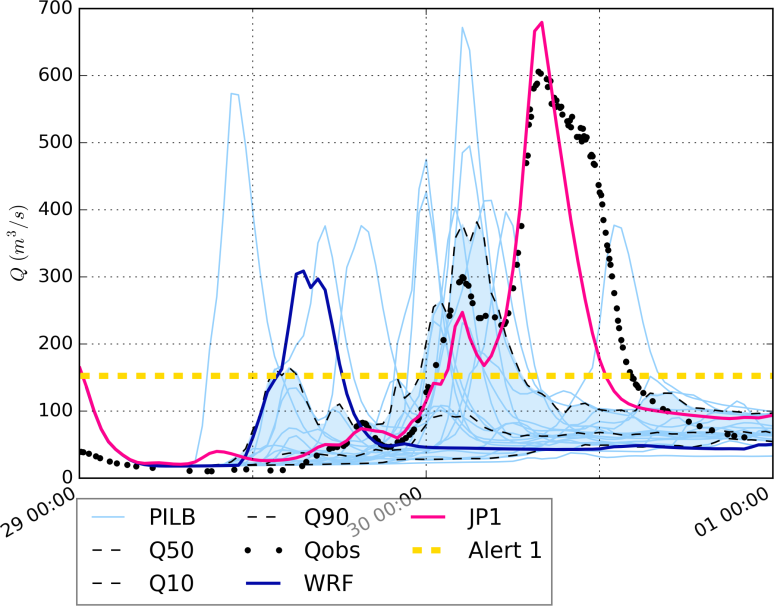Uncertainty propagation
To be relevant, the response of a model must necessarily be accompanied by an estimate of its uncertainty. In hydrological modelling, the sources of uncertainty are numerous (uncertainties on observations, initial conditions, parameter values, model structure). Sensitivity analyses (local/global, spatial, temporal, Generalized Likelihood Uncertainty Estimation) and ensemble forecasts are the numerical tools generally used to quantify them (Barthélémy et al., Journal of Hydrology, 2017). These ensemble forecasts are actually several numerical forecasts made with distinct, equally plausible initial conditions and/or parameterizations. Different hydrometeorological ensemble forecasting strategies have been tested with meteorological research collaborators (projects funded by the Réseau Thématique de Recherche Avancé: Sciences et Technologies pour l’Aéronautique et l’Espace and the Eurorégion Pyrénées Méditerranée in particular). These studies on the evaluation of the different sources of uncertainty and their impact on the model response show that, on the small Mediterranean catchments studied, obtaining a satisfactory forecast of the shape of the hydrograph with an anticipation of 48 hours remains a challenge. Nevertheless, the ensemble forecasts allow to improve the relevance of the results compared to a deterministic hydrometeorological forecast. These forecasts are also useful for issuing a flood risk alert, i.e. in predicting that a discharge threshold has been exceeded at a given station. In parallel to this strategy of propagation of the uncertainty related to the forcing, a method was also developed in order to explicitly take into account the confidence interval of the hydrometric series, resulting from the obtaining of the rating curve or estimated, in coherence with the objective of modeling. This methodology has been the subject of a detailed study for the calibration/validation of the MARINE model, in comparison with several other methodologies from the literature (Douinot et al., Environmental Modelling and Software, 2017): it offers significantly better performance in general, allowing in particular to correct errors mainly during periods of major concern, i.e. during the rise of floods and at high flows with regard to flood forecasting.






